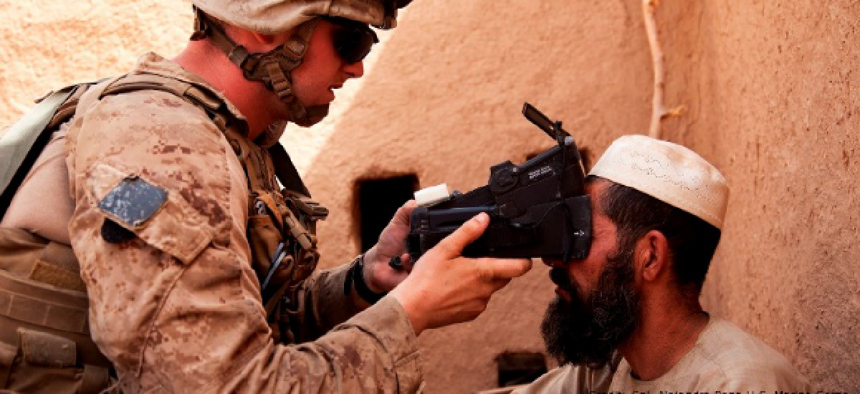Army wants to clean up biometric ID data

Cleaner data and biometric-matching algorithms will deliver improved matching results and limit the number of manual comparisons required.
The Defense Department’s Automated Biometric Identification System is required to accept biometric data from across DOD, and some of this data comes from legacy collection systems that include poor-quality images or inaccuracies. For this reason, ABIS, which is supposed to be the authoritative biometric database, includes a large number of records with errors, missing data or low-quality images. Poor-quality data not only requires extensive computing resources to process, but it also results in a higher number of near matches that require a human examiner to resolve.
Until all legacy collection systems are retired, the Army wants an interim solution that will first clean the existing biometrics, then rank incoming data based on its quality and eventually bring quality thresholds on par with commercial systems. In a March 31 small business innovation research broad agency announcement, the Army said better data will deliver improved matching results and limit the number of manual comparisons required, speeding response and reducing examination teams’ backlog.
The data cleansing is paramount. Even with biometric-matching algorithms, while ABIS contains incomplete, incorrect and poor-quality data, staff time will be required to adjudicate match requests. “System performance, regardless of investments in new hardware, and software are limited in their ability to improve systems metrics without data cleansing,” the BAA said.
For the three-phase Biometric Data Cleansing program, the Army said it is looking for machine learning tools to assign a data quality score for all images in the database, including face, finger, iris, palm and latent images. The algorithm should completely cleanse and deduplicate the existing dataset and continuously “triage” all new biometric data submitted, the BAA said.
As much as possible, the proposed solution should incorporate off-the-shelf technology to speed the deployment of a complete software solution that addresses current ABIS data as well as the ongoing cleansing of data from old Army legacy devices still in use for biometrics capture.
Proposals are due May 18. Read the full BAA here.





